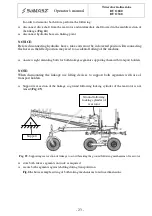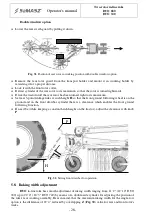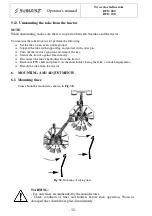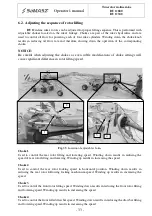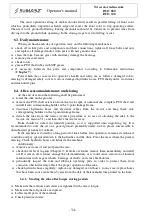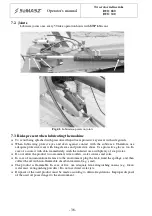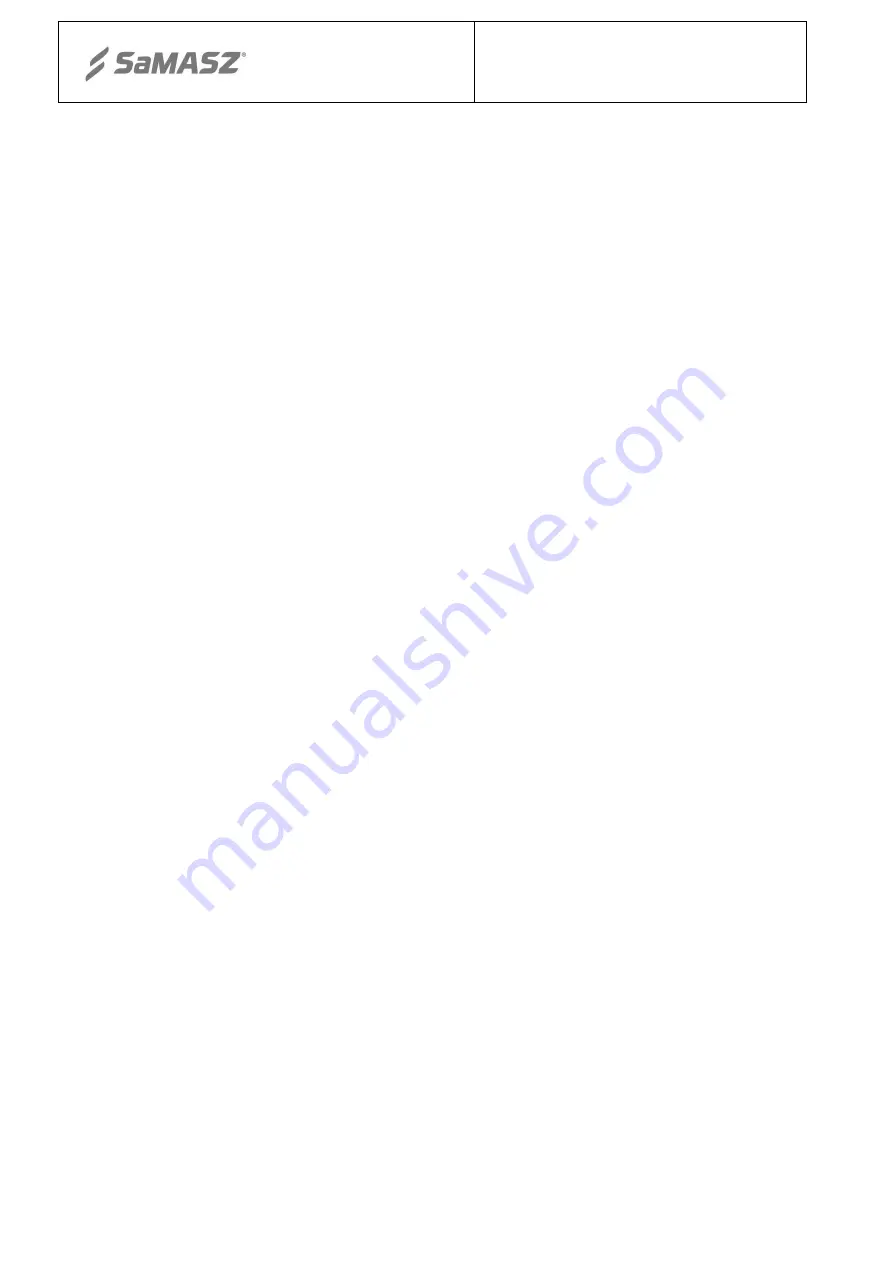
Operator's manual
Two-rotor in-line rake
DUO 680
DUO 740
- 34 -
The most optimum setting of chokes should firstly result in parallel lifting of front rotor
which is particularly important at field's edge and causes the front rotor to stop operating earlier.
Then rear rotor ground following locking mechanism should be turned on to prevent tines from
driving into the ground while operating. In the closing stage rear rotor lifting occurs.
6.3.
Daily maintenance
When you finish each day of operation carry out the following maintenance:
check all visible parts and components and their connections; tighten all loose bolts and nuts
and replace all damaged and/or worn parts with new genuine ones,
clean the rake, because grass with mud may damage the bearings,
remove grass and mud,
check rotors,
grease PTO shaft tubes with STP grease,
if necessary, lubricate the parts and components according to lubrication instructions
(
Chapter 7
).
Parts which may cause risk to operator’s health and safety are as follows: damaged rotors,
missing or damaged safety covers, worn or damaged hydraulic hoses, PTO shaft guides, worn tines
and tine holder pins.
6.4.
After-season maintenance and storing
At the end of season the following shall be performed:
lower the rake on the ground,
remove the PTO shaft extension from the tractor rpm or unmount the complete PTO shaft and
install it into corresponding holder at the 3-point linkage frame,
disconnect hydraulic hoses and electrical cables from the tractor and hang them onto
corresponding holders on the 3-point linkage frame,
detach the rake from the tractor (reverse procedure as in case of attaching the rake to the
tractor, see section 5.1), and then drive the tractor away.
Rake should be stored in standstill position, so it is supported onto supporting leg. It is
recommended to store the set on a paved ground, preferably under roof, in places inaccessible to
unauthorized personnel or animals.
If the machine is stored for a long period of time before first operation, examine its technical
condition and pay special attention to the hydraulics and the drive. Paint the areas where the paint is
missing. Check hydraulic hoses and lubricate the machine.
Additionally:
remove any traces of rust and paint the area,
check the oil level in gears (Chapter 7). If leaks are found, remove them immediately and refill
oil. If water in oil is found, change the oil immediately as it could cause corrosion of internal
mechanisms such as gear wheels, bearings, or shafts, and cause breakdowns,
periodically inspect the rake and lubricate operating parts in order to protect them from
corrosion which adversely affects the proper operation of the rake,
check hydraulic hoses regularly; replace any damaged or old hoses; in any case, replace hoses
that have been in use more than 5 years from the date of their manufacture printed on the hose.
6.4.1.
Starting the rake after longer storing periods
Make sure that all nuts and screws are tightened with correct torque,
Make sure that all guards are in place,
Lubricate all parts of the machine,
Check pressure in tires.




